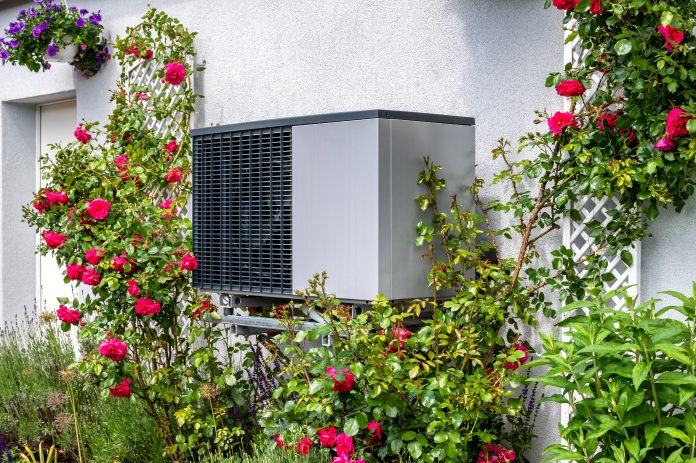Chris Caton, product director – Commercial, at Ideal Heating, explains the impact that three low and zero-carbon heating technologies could have on decarbonising public sector buildings
As estate managers look ahead to the next window of Public Sector Decarbonisation Scheme funding, the Net Zero and Heat and Buildings strategies introduced in 2021 set out an ambitious vision for public sector buildings to reduce their emissions by 75% by 2037, compared with 2017 levels. This target is linked closely with The Public Sector Decarbonisation Scheme (PSDS) – the government initiative investing billions of pounds into helping NHS Trusts, emergency services, universities, colleges, schools, and local authorities to reduce their emissions and introduce more environmentally conscious heating technologies.
The government says the next application window to the scheme, Phase 3c, is expected to open in Autumn 2023, so it’s prudent that organisations begin to consider what their upcoming decarbonisation projects might look like now.
Heating and hot water in buildings are responsible for a fifth (21%) of total carbon emissions in the UK. As such, the replacement of traditional heating systems will naturally form a big part of many applications of the scheme.
There are three main heating technologies that will be transformative in helping buildings to decarbonise in the years ahead: commercial heat pumps, heat interface units and hydrogen-ready boilers. But what do you need to know about these low- carbon heating solutions?
Commercial heat pumps
Unlike gas boilers, heat pumps don’t burn fuel to produce heat.
Instead, they harness heat from the air, water, or ground outside a building. This free heat is absorbed by a liquid refrigerant which causes it to boil and vaporise, and the gaseous refrigerant is then compressed to a high pressure, which raises the temperature of the gas significantly.
The gaseous refrigerant then enters a heat exchanger, where it deposits its heat into a building’s heating system via a pumped water circuit. As its heat is lost, the gaseous refrigerant naturally condenses back to liquid form to repeat the cycle.
Because heat is transferred rather than generated, heat pumps can operate up to four times more efficiently than traditional boilers, meaning they have the potential to produce in excess of four units of heat for every unit of electricity that they use.
This means that these heating technologies used in non-domestic buildings can reduce carbon emissions by 65-70% compared to traditional gas or electric boilers.
Heat pump technology is already being used successfully in many non-domestic buildings, helping sites to reduce their carbon emissions by more than a third. Over the next few years, this number is likely to increase even more, driven by legislation and government funding with building regulations at the heart of change.
District heating and Heat Interface Units
Heat pumps often take the limelight for heating technologies that can help us to decarbonise. But district heating and Heat Interface Units (HIU) should have a much bigger profile as a solution that will have a transformative impact on our emissions.
In the years ahead, district heating systems, also known as heat networks, could be heating millions of UK buildings.
District heating removes the need for buildings or properties to have their own individual heat source, instead delivering thermal energy in the form of hot water from a centralised source to end users through a network of insulated pipes. This boosts efficiency and reduces heating costs for organisations.
Each residence then has a HIU which uses heat exchangers to transfer the heat from the distribution network to the end user’s property, either into their central heating or hot water system. Although the HIU is not generating heat it is an efficient method of distributing hot water to low-temperature heating technologies.
Hydrogen-ready boilers
Historically, much focus has been on transitioning from gas appliances to electric solutions, including heat pumps, electric boilers, and panel heating.
But now there’s also talk of hydrogen to replace the methane supplied through the traditional gas network, from a blend to 100%. A hydrogen blend which is made up of 80% methane and 20% hydrogen, is likely to be the first step in the next two to five years. Following this, the Government has made a commitment to make a decision on the potential for 100% hydrogen in the grid in 2026. This decision would see clarity on when 100% hydrogen-ready boilers could be mandated in the UK.
Many manufacturers are already producing heating technologies that are ready to run on a blend of hydrogen, which, when burnt, will emit fewer emissions than 100% methane.
Consult an expert in heating technologies
It can be hard to know what the right low-carbon heating solution is.
For example, the concept of hydrogen-ready boilers seems as though it will be better suited to older, draughtier buildings than heat pumps. But then we must consider how far away this could be and a project may be more imminent and unable to wait for this decision.
And any rollout of heat pump technology will need to consider the suitability of a building or if it needs necessary upgrades in order for the technology to work as efficiently as intended.
For those on a heat network, a balance of heat interface units and heat pumps could also add the right mix for public sector estates.
Estate managers can consult an expert, like Ideal Heating, to advise what the best option is, ahead of putting pen to paper on their next application for the Public Sector Decarbonisation Fund.

This work is licensed under Creative Commons Attribution-NonCommercial-NoDerivatives 4.0 International.











